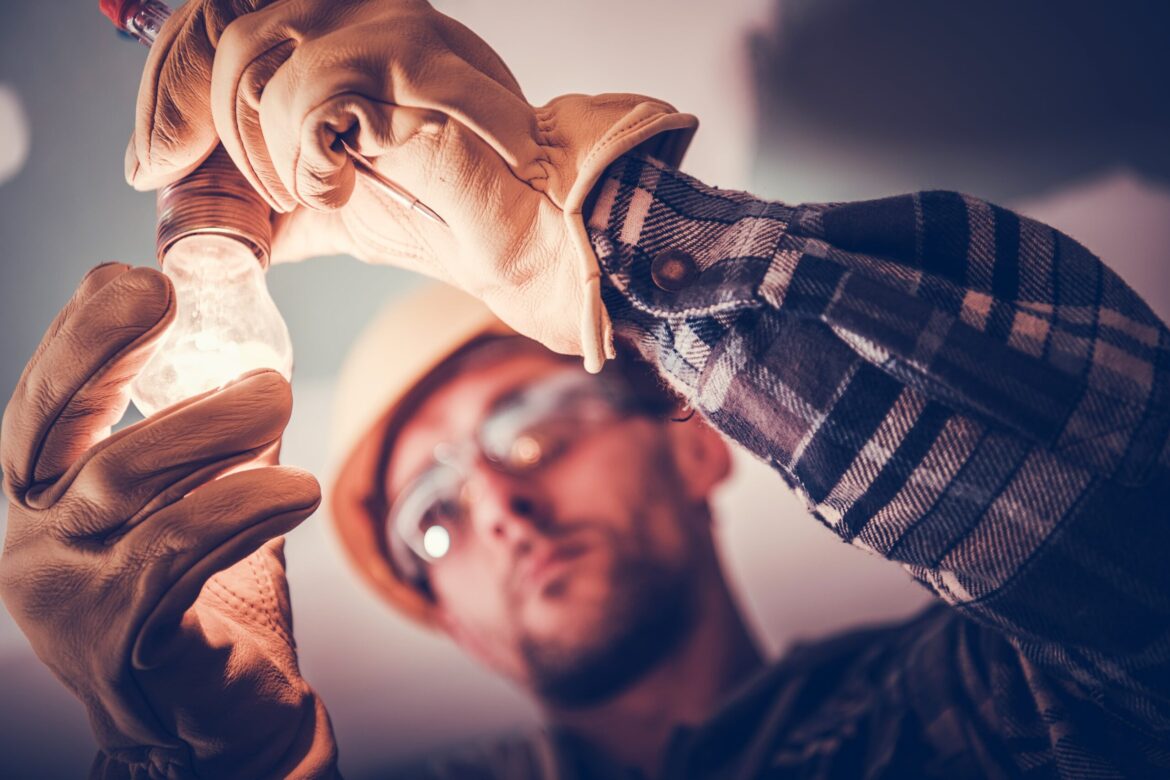
Improving Workplace Lighting:
How Proper Illumination Enhances Safety and Productivity
Imagine trying to solve a puzzle in the dark. You squint, you strain, you grope for pieces that won’t fit – welcome to what a working environment under poor lighting feels like.
Lighting levels might not always be the first thing you notice in a workplace, but get it wrong, and it’s like trying to run a marathon in flip-flops: technically possible, deeply unwise.
Light is more than illumination — it’s a silent supervisor of safety, productivity, and even your body’s inner clock, playing a critical role in occupational hygiene.” Let’s shine a light (pun 100% intended) on how to get it right.
The Occupational Safety Angle: A Clear Vision for a Safer Workplace
From a compliance and care perspective, lighting is part of the Occupational Health and Safety Act in South Africa, specifically addressed under the Environmental Regulations for Workplaces. Poor lighting is a hazard – not just an inconvenience. Whether it’s tripping over boxes in dim corridors or misreading measurements under a flickering fluorescent tube, the consequences can be severe.
According to research cited by the International Labour Organization (ILO), workplaces with inadequate lighting have higher incidents of accidents, eye strain, headaches, and errors. So yes, upgrading those dull overhead fluorescents isn’t just a design choice – adequate lighting is an occupational safety and legal requirement.
Cue Apex Environmental — we conduct lighting surveys as part of our occupational hygiene services, helping businesses comply, thrive, and, avoid injuries.
Lighting Assessments: Know Before You Glow
A proper lighting assessment (or illumination survey) isn’t just walking in with a lux meter and a knowing squint. It involves:
- Lux level measurements (lux = lumens per square meter)
- Glare evaluation
- Flicker detection
- Task-specific assessment
- Compliance check against the Occupational Health and Safety Act
This data drives real work area decisions. Should you reposition your task lighting? Add additional lighting? Replace flickering lights before Janet from Finance loses her marbles?
Lighting is evaluated per task type. Office work, for instance, requires 300–500 lux, while precision assembly requires 1000 lux. Your mood lighting may wow interior designers, but it won’t cut it for safe occupational hygiene.
The Science of Spectrums: Not All Light is Created Equal
Time for a crash course in light science — don’t worry, there’s no quiz at the end.
- Colour Temperature
- Cool light (5000K–6500K) mimics daylight. Great for focus, alertness, and staying awake. Perfect for task-heavy, alertness-critical areas.
- Neutral light (3500K–4500K) is soft and versatile – good for general working environments.
- Warm light (2700K–3000K) promotes relaxation. Save this for lounge zones, not the production floor, unless naps are part of the KPIs.
- Circadian Rhythms: Your Body Clock’s BFF
Humans are biologically wired to the sun’s rhythm – it’s called your circadian rhythm. Wake up with blue-rich light in the morning; wind down with warmer tones in the evening. Office lighting that mimics this natural flow boosts productivity and sleep quality.
Mistimed lighting = mismatched moods. Too cool in the afternoon? You feel jittery. Too warm in the morning? You feel sluggish. Getting it right means syncing your workers’ lighting environment with their biological clocks – and no, simply handing out coffee doesn’t count.
Natural Light: The Free MVP
Natural light isn’t just pretty — it’s powerful. Studies show it boosts mood, reduces eye strain, improves sleep, and enhances Vitamin D synthesis (hello, immune system!). Plus, it saves on energy bills.
But here’s the rub: not all workplaces can bask in the glow of expansive windows. Enter daylight harvesting – using sensors and smart lighting systems to balance natural and artificial light throughout the day.
Tips for Using Natural Light Effectively:
- Use skylights and light shelves to bring daylight deeper into the space.
- Opt for window blinds that diffuse instead of block.
- Position desks perpendicular to windows to avoid glare.
Artificial Lighting: The Workhorse of the Indoor World
Even the sun clocks out. That’s where artificial lighting steps up.
Key Types:
- LEDs: Energy-efficient, long-lasting, and available in all colour temperatures. Your best friend.
- Fluorescents: Affordable but can flicker and fade – often a silent productivity killer.
- Halogens: Bright and crisp, but hot (temperature-wise and on the wallet).
- Task Lights: Localised lighting for precision work.
A good lighting design plan layers ambient (general), task (focused), and accent (decorative) lighting. Think of it as the lighting equivalent of a good dinner: starter, main course, and dessert — all essential, none replaceable.
Lighting for Different Work Zones
Offices: Use a mix of overhead and task lighting, avoid shadows and glare, and incorporate circadian-friendly lighting if possible.
Warehouses: High-intensity, uniform lighting with minimal shadows and strong emergency backup.
Healthcare Settings: High-CRI (Colour Rendering Index) lighting is essential for accurate diagnosis and patient comfort.
Industrial Zones: Think robustness and safety – explosion-proof fixtures where necessary, cool lighting for alertness.
The Human Touch: Psychological Impact of Lighting
Poor lighting makes people cranky. Fact.
Lighting influences mood, stress levels, attention span, and even interpersonal interactions. In one study, poorly lit environments correlated with higher reports of depression, eye strain, and absenteeism.
Pro tip: Don’t forget biophilic lighting design — mimicking natural elements to increase well-being. Think natural shadows, warm wood hues in lighting casings, and integrating greenery with light exposure.
Lighting Pitfalls to Avoid
- Over-lighting: Brighter isn’t always better – too much light can cause glare and fatigue undermining good occupational hygiene practices.
- Uniformity neglect: Dark corners create discomfort and safety hazards.
- Ignoring maintenance: Dirty light fixtures and failing bulbs silently sabotage your efforts.
- “One-size-fits-all” mentality: Different tasks = different lighting requirements.
Why This Matters to You — Yes, You!
- HR teams: Want a happier, healthier team? Better lighting = better moods.
- Safety officers: Fewer falls, fewer injuries, fewer reports.
- Finance: Reduced sick days, improved output. It’s a literal ROI glow-up.
- Sustainability leads: Energy-efficient lighting = lower carbon footprint and operational cost.
- Legal: complying with the Occupational Health and Safety Act.
Lighting Up Your Workplace with Apex Environmental
Here’s where we come in.
Apex Environmental provides comprehensive lighting assessments as part of our Occupational Hygiene services. We evaluate your space, your tasks, and your lighting setup to craft a compliance-ready, worker-friendly, productivity-boosting illumination plan.
We bring:
- Scientific rigour
- Regulatory compliance
- Practical, affordable solutions
- A passion for preventing eye strain and slip-and-fall lawsuits
Because when your workplace glows, your people grow.
Let’s Recap: Your Illuminated Checklist
- Get a lighting assessment
- Know your lux levels
- Balance natural and artificial light
- Use circadian-friendly colour temperatures
- Tailor lighting to task
- Layer ambient, task, and accent lighting
- Avoid glare, flicker, and shadows
Final Spark: Let There Be (Smart, Safe, Thoughtful) Light
Workplace lighting isn’t just about visibility – it’s about vitality. It’s about making every worker feel awake, safe, and valued. It’s the difference between a dull 9-to-5 and a dynamic, focused, energised workday.
So go ahead. Flip that switch. Upgrade that bulb.








